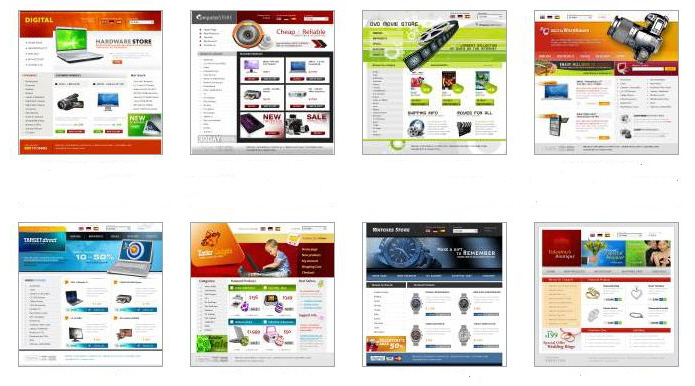
Web designing is fast transforming into a world of its own, hosting different elements that add color, character, and life to a website, so that it can serve to communicate with its targeted audience in the most effective manner. That is why becoming a successful web designer no more remains a child’s play, and asks quite a lot from any contender who wants to do so.
To become a high profile web designer, one has to make sure to adhere to some fundamental elements of web design, which should be incorporated to make every website design project a success. This article discusses some major of them in the lines below:
Line
“Line” can be regarded as the simplest element being used in a web design. In fact, many web designing pros define line as a form having a specific length and width, but lacking any depth. Experts use an element as simple as line to convey versatile feelings and moods through a web page by adding variation in size, thickness, edges, curves, etc. Lines are also used to segregate different sections of a web page. In a nutshell, lines can be used best for the following:
- Lines can be used for better conveying different emotions. It is best to identify the type of line suiting best with a particular web design from choices like thin, thick, dotted, wavy, dashed, etc.
- Using lines becomes more effective with a definite purpose behind drawing them. Do you want to relate two relevant parts together, or you want to separate them from one another? Do you intend adding a border around an image or something else?
The Grid
Web Designers use grid as a tool to position different elements where they want on a web page. Usually, grid itself remains hidden in the final appearance of a web page, but sometimes its borders are drawn in order to add some strength to it. A grid serves very handy in organizing information on a web page the way a designer wants, thus adding more strength and character to the final design.
Shape
Shapes are two dimensional entities that are formed when a line encloses a particular area on a web page. There can be endless variations of a shape; simple ones more convenient in drawing and understanding as compared to complex ones. Circles, rectangles, squares, triangles, polygons, etc are some common examples of shapes used most frequently in designing websites.
Form
Forms can be referred as three-dimensional objects within a web page design. Most of the best web design relying on 3D techniques are the ones making maximum use of different types of forms like spheres or cubes. A form can be of different types, like natural, geometric, organic, abstract, non-objective, etc.
Texture
Texture helps designer inculcate a particular mood in a web design. It helps them greatly in conveying the underlying theme and message of a website discretely to their targeted audience. Some of the most commonly used textures (other than flat or smooth) by Web Designers include paper, concrete, fabric, stone, and other natural elements.
Color
Color, without any doubt, serves as the most elementary web design element that can influence any targeted audience most effectively, because of its strength to generate strong emotional reactions. Audiences are bound to get influenced (consciously or subconsciously) by colors used in a website design.
Conclusion
By using all these basic elements appropriately and wittily in a web design, audiences feel compelled to respond to a website positively. Make sure you adhere to all the useful information above to make your website designs speak for themselves.



